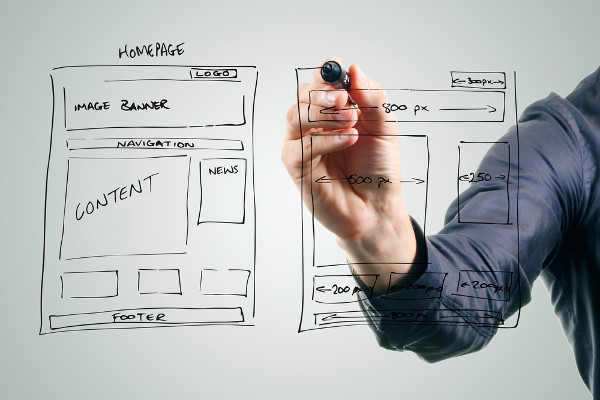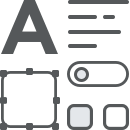
There's also the concept of getting a widget to generate an event, you can have another widget listen to the event and then that widget can respond in some way. You can also take a screen design (in JPEG for example) import the image, activate areas of the image using the "image map" tool and you then effectively have a higher fidelity prototype!Īxure also allow you to create actions based on variables (you can set or read them).
Best wirefram prototype tool plus#
The plus is that when you specify interactions, when you generate prototypes from your wireframes, those interactions translate to real working widgets. It allows you to focus on what you're creating and makes things such as annotations, notes, interactions, very easy to specify. That ultimate goal is just my opinion.)Īxure is a great wireframing/prototyping/specification tool. (I speak of improvement as working towards the ultimate goal of having a client feel just as comfortable drawing on an iPad as they do on paper, the advantage of which being that the client could be using a functional protoype instead of a static page. Omnigraffle, SketchBook, TouchDraw, Draft, and other iPad apps are paving the way for an improved collaboration experience.

in-person client watch-you-over-the-shoulder. And it is up to us to do evaluate which is best for the job.Īdditional thought: the iPad is starting to help blur the lines between in-person client collaboration vs. Unfortunately, by definition, tools cannot adapt as quickly as the problems they are built to solve hence, many of these products seem very similar, but not quite identical, to each other. If it requires working with a client's internal team who use primarily Adobe, Fireworks may be best. If it requires long-distance collaboration, Axure may be best. So, for the other 10% of projects, the protoyping tool will depend on the project. design, development, prototyping, wireframing - let's be honest, they're all gradually merging with each other.) (I speak of design in the vaguest sense, i.e. Justification for paper abounds on this thread, so I won't re-iterate.ĭesign is never the same among projects, and certainly not among clients. I second Daniel Bleisteiner's motion: "It depends."įor 90% of projects, consider my vote for paper. gestural interactions, multi-dimensional model manipulation, custom controls for a fancy new OS, optimizing human performance in some dimension).

I've found that almost all the fundamental design improvements come from thread 1 and thread 2, but thread 3 is necessary if you are going beyond the standard controls or your domain is new/complex/specific (e.g. Use appropriate, effective methods for the different types of questions. Keep the aesthetic concerns out of the workflow/function feedback loop. In summary, build specific kinds of prototypes for specific purposes. Run a small number of short usability tests including timing data collection.Focusing on a single, detailed interaction or animation sequence hack together a functional prototype in whatever tools work best for you: HTML/CSS/JS, Flash, lower-level programming languages, UI component frameworks/libraries, etc.Thread 3: Detailed interaction and animation Use preference-testing, AB testing, critiques, charettes, etc. Get feedback on these independently of the workflow prototypes.Explore color, proportion, visual metaphors, typography, etc.



 0 kommentar(er)
0 kommentar(er)
